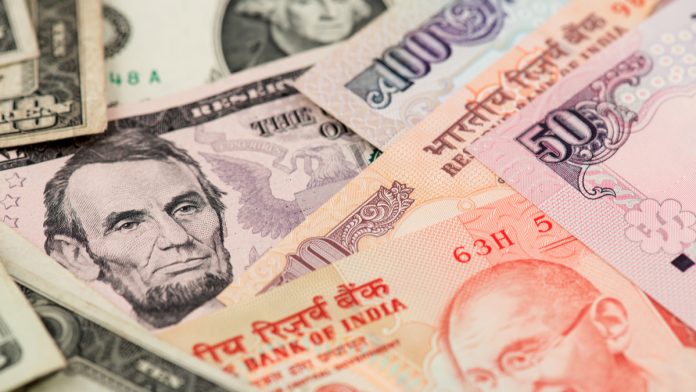- Indian Rupee (INR) trends lower as US – Sino tensions mount
- Sensex & Nifty close at record highs
- US Dollar (USD) strengthens on safe haven flows
- US fiscal stimulus hopes cap USD gains
The US Dollar Indian Rupee (USD/INR) exchange rate is advancing on Monday, paring losses from the previous week. The pair slipped -0.2% across last week, closing on Friday at 73.75. At 011:15 UTC, USD/INR trades +0.15% at 73.86.
Risk sentiment has taken a hit at the start of the week amid a rising on tensions between the US and China, just weeks before President Trump is due to leave office. Trump is reportedly poised to apply sanctions to dozens of high-ranking Chinese officials over their role in the recent disqualification of Hong Kong legislators. The increase in tensions unnerved investors, even though Trump is heading out of the White House in less than a months’ time.
As a result, demand for riskier currencies such as the Indian Rupee fell, meanwhile the US Dollars was seen pushing higher across the board.
Losses in the Rupee are being capped by a surge in the domestic Indian stock markets. Indian benchmarks the Sensex and the Nifty rose to record closing highs, the fifth straight record closing high for the Nifty thanks to vaccine optimism.
In the latest developments the Serum Institute of India said that it has made the first formal application for emergency use approval for the AstraZeneca Covid vaccine.
The US Dollar is pushing northwards as investors seek out its safe haven properties. However gains are ex;pected to be capped amid optimism surrounding additional US fiscal stimulus.
Last week’s disappointing US jobs report, which saw just 245,000 new jobs created in the US in November, well below October’s 610,000, boosted expectations of a new covid rescue package from Congress.
A bipartisan group of Democrats and Republicans have proposed a compromise fiscal stimulus package of $0.9 trillion that appears to be supported by leaders on both sides of the House.
There is no high impacting US data due to be released in the US session, so risk sentiment could continue to drive the greenback.





